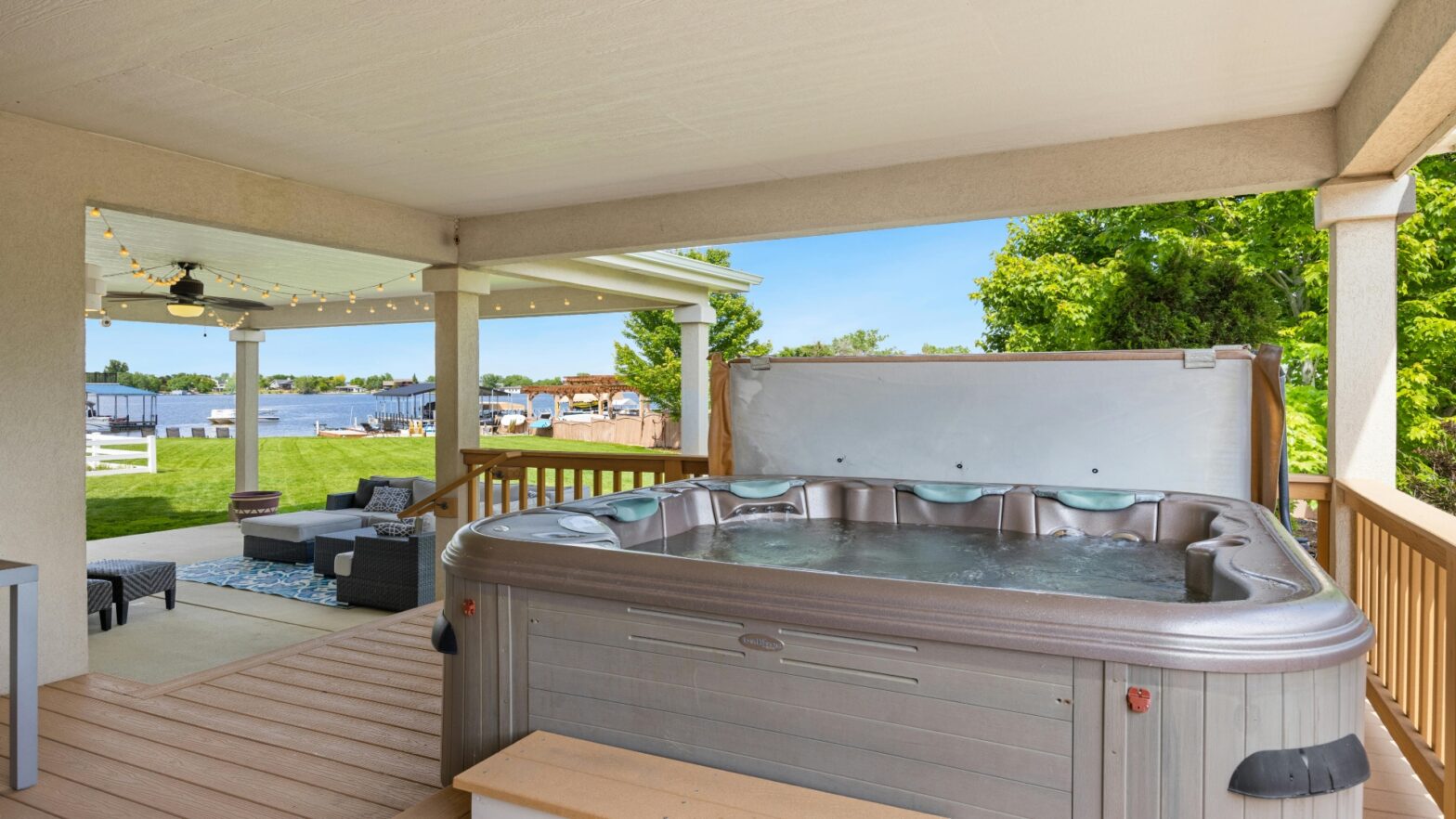Clean the Filters Regularly
Keeping your spa’s filters clean is crucial for ensuring the water stays fresh and clear. Dirty filters can lead to cloudy water, reduced circulation, and increased strain on your system.
A suitable schedule looks like this:
- Weekly Rinse: Rinse your filters under a hose every week to remove debris and dirt.
- Monthly Soak: Once a month, soak them in a filter cleaner solution overnight. This breaks down oils and deeper grime that regular rinsing might miss.
- Annual Replacement: Swap out old filters annually or as recommended by the manufacturer to keep everything running smoothly.
You could also consider installing an ozone generator for spas to give existing filters a helping hand. This tech aids in the elimination of all sorts of common contaminants, and finding compatible components to carry out this upgrade is a breeze.
Monitor and Adjust pH Levels
Balancing your spa’s pH levels ensures a safe, comfortable experience. Water that’s too acidic or alkaline can cause skin irritation, damage components, and decrease the effectiveness of sanitizers.
To do this, implement the following steps:
- Weekly Testing: Use a test strip or digital tester once a week to check your water’s pH level. Ideal readings should be between 7.2 and 7.8.
- Adjust as Needed: If levels are off, use pH increasers or decreasers accordingly. These chemicals help bring your water back into balance.
- Alkalinity Check: Be sure to monitor total alkalinity, as it stabilizes pH levels and prevents sudden fluctuations.
Also aim to only spend up to 15 minutes in your home spa at any one time. This recommended maximum is to do with optimizing the health benefits, and preventing negative side effects.
Inspect Jets for Debris and Blockages
Your spa jets are key to delivering a chilled out experience, perhaps as part of a relaxing backyard makeover. Over time, they can become clogged with debris or mineral buildup, reducing their efficiency.
To prevent problems:
- Monthly Checks: Perform monthly inspections by running your hand over the jet openings. Feel for any resistance or unusual blockage.
- Flush Out Debris: Use a pipe cleaner or similar tool to remove visible debris. For stubborn blockages, consider using a jet cleaning solution.
- Preventive Measures: Regularly shocking your spa helps prevent biofilm and mineral buildup inside the jets.
This is as much about protecting your investment as anything else, as unchecked blockages can limit the lifespan of a spa setup.
Use Spa Covers to Prevent Contamination
A spa cover acts as a barrier, keeping unwanted debris and contaminants out of your water. It also helps maintain temperature and reduce energy costs.
Aim for:
- Daily Covering: Always place the cover on your spa when it’s not in use. This prevents leaves, dirt, and insects from getting in.
- Regular Cleaning: Wipe down the cover with a mild cleaner weekly to remove dust and mildew.
- Inspect for Damage: Check for any tears or damage monthly. A compromised cover can let contaminants in, defeating its purpose.
Another upside of using a well-maintained cover is that you’ll extend the life of your water treatment efforts while cutting down on maintenance time. And if you’re already maintaining outdoor furniture with covers, adding your home spa system to the agenda is not a big ask.
If you provide headphones for your clients to use during their relaxation time, ensure that you’re keeping headphones clean and sanitized as others will also use them, which is crucial for health and safety standards as well as the longevity of the equipment.
Drain and Refill Your Spa Periodically
Even with regular maintenance, your spa water will eventually need replacing to stay fresh and clean. Draining and refilling prevent the buildup of chemicals, minerals, and contaminants.
Here’s how:
- Quarterly Routine: Plan to drain and refill your spa every three to four months. This keeps the water chemistry balanced.
- Thorough Cleaning: While the spa is empty, scrub down all surfaces with a non-abrasive cleaner. Pay special attention to corners where grime can accumulate.
- Rinse Before Refilling: Rinse thoroughly before adding new water. This removes any residual cleaning agents that could affect water quality.
Homeowners currently face down unexpected home maintenance costs of $1,953 on average, and keeping a close watch on your spa is the best option for eliminating it from your list of unplanned expenses.
Wrapping Up
These tips are very much a must-do for anyone who’s lucky enough to have a home spa system to call their own. Pre-emptive maintenance is much more time and cost-efficient than having to fix all-out catastrophes in months or years to come.
































